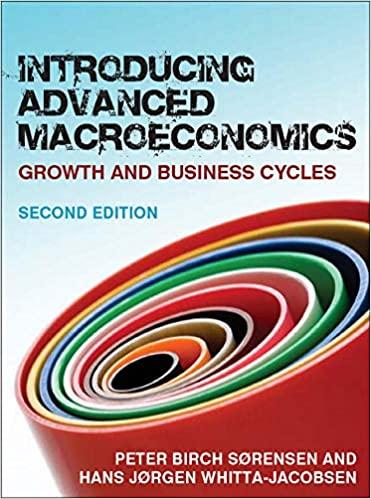1. Show that from k = K/L it follows k/k=K/K-L/L. (Hint: You can do the 'log-dif-trick', that...
Question:
1. Show that from k = K/L it follows k/k=K/K-L/L. (Hint: You can do the 'log-dif-trick', that is, first take logs on both sides of k = K/L and then differentiate with respect to time.) Then show that the Solow model in continuous time implies the Solow equation: k=sBk - (n+8)k. (41) Compare with (32) for the model in discrete time and give an intuitive explanation like the one given for (32) in this chapter.
Fantastic news! We've Found the answer you've been seeking!
Step by Step Answer:
Related Book For 

INTRODUCING ADVANCED MACROECONOMICS GROWTH AND BUSINESS CYCLES
ISBN: 9780077117863
2nd Edition
Authors: PETER SORENSEN, Hans Whitta Jacobsen
Question Posted:






